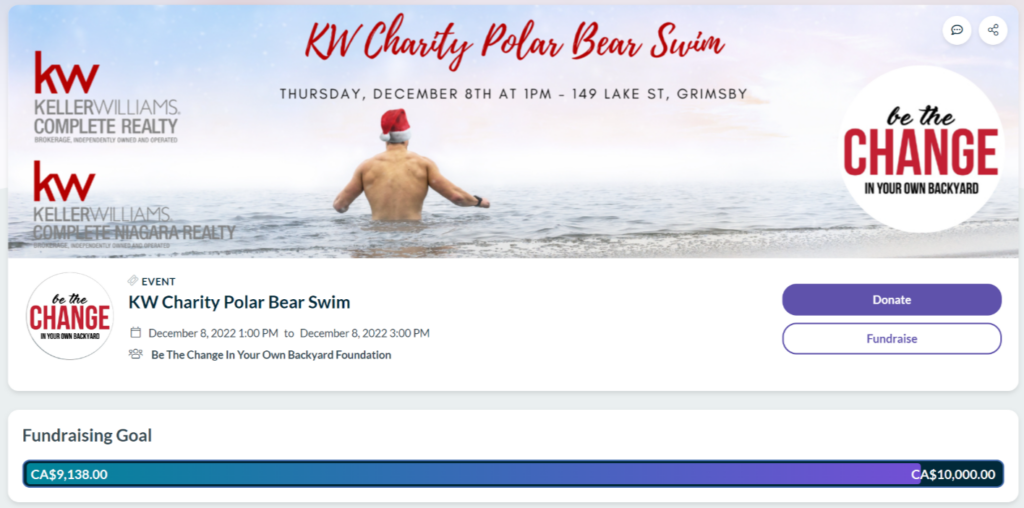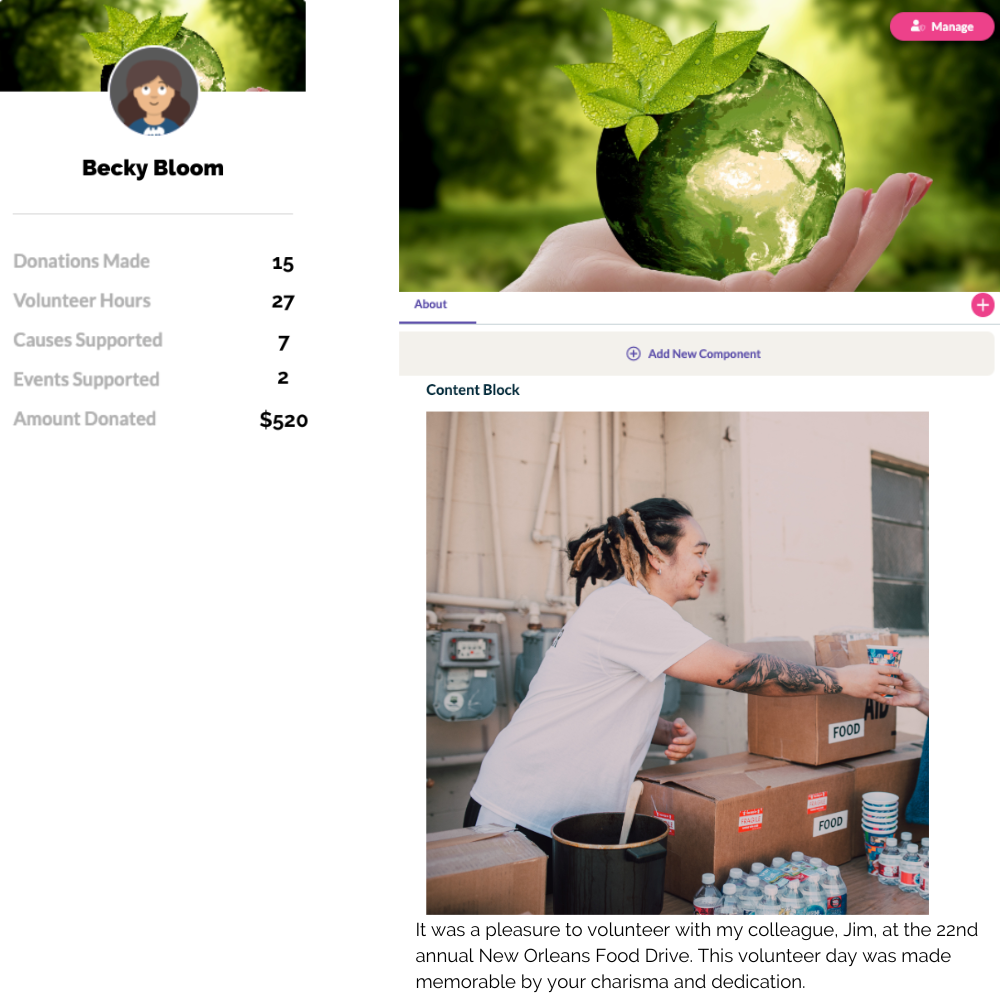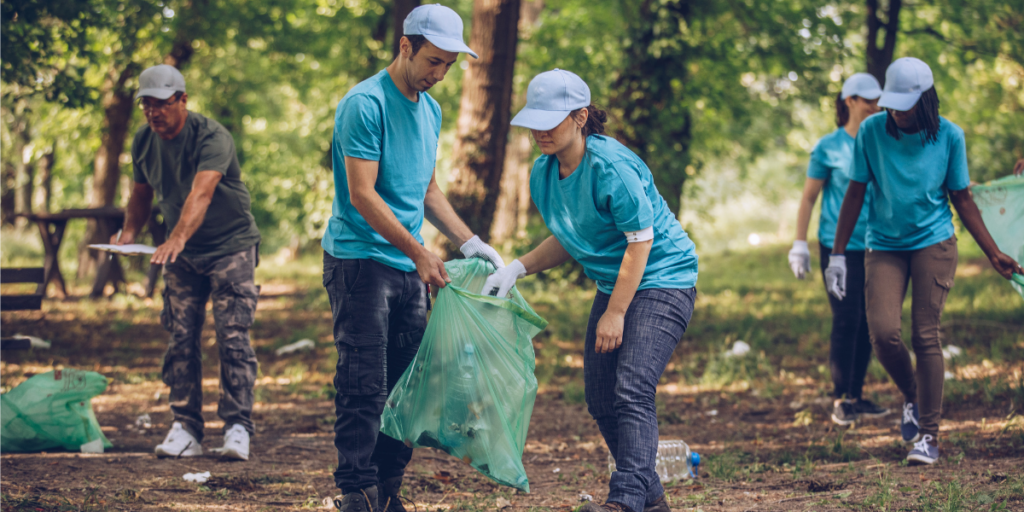Compassion, communication, and cooperation between team members constitute a productive workforce. Before the pandemic, teams could build strong bonds beyond the four walls of their cubicles through in-person meetings, break room conversations, and daily lunches.
With almost 18% of the US workforce now primarily working from home, in-person meetings became video calls, and those daily lunch breaks together became quarterly team meetups.
Due to the high overhead costs of maintaining an office mixed with the desire to spread the talent pool worldwide, remote work culture for some organizations is here to stay. Though cultural norms have shifted due to the digitalization of remote work, team leaders can engage their remote teams by fostering a culture of giving.
Through a culture of giving, teams can come together, bonding over shared interests, passions, and values—all while giving back to their communities. With 75% of employees regarding teamwork and collaboration as important, providing avenues for your team members to unite while simultaneously helping shape their communities is imperative.
Below are some tactics for how you can build a culture of giving to strengthen the three C’s: compassion, communication, and cooperation among your team.
Encourage team fundraising
If your team (or a portion of your team) is working in close proximity to one another, encourage them to organize a fundraising event together. Fundraisers are an effective tactic to improve team collaboration in which employees can join forces to achieve a common goal.
An investment in a social impact platform can make this possible, enabling any team to create a centralized fundraising page for a mutual charity or nonprofit of their choice. When setting up a fundraising page, employees can band together and collaborate on several elements, such as:
- A donation goal.
- A fundraiser time and day.
- Strategies to increase page visibility.
- Visuals that will entice donors.
- Relevant event information to include.

When team members unite through an employee giving program and leverage their unique and diverse skill sets, they can make a greater impact.
For example, a team member on the marketing team with social media experience may be an excellent candidate to increase visibility around the fundraising page. In contrast, another team member on the marketing team with graphic design experience may be a good candidate to create original imagery to enhance the page.
Note: If your team resides in different countries or continents, fundraising as a team can still be made possible. Rather than an in-person event, fundraisers can include a virtual event component (i.e., a silent auction or trivia night). If a virtual event isn’t ideal due to team members working in different time zones, employees can raise money on behalf of a cause together, collecting donations via peer-to-peer efforts, and tracking donations on a centralized page.
Open up the barriers to volunteering
Volunteer work provides opportunities for team members to spark conversations, share knowledge, and gain fresh perspectives. For instance, remote teams might find an opportunity to volunteer at a local Humane Society together. While spending a morning walking animals or sanitizing cages, employees will have that uninterrupted, quality time with one another to create authentic and genuine human connections.
Even geographically dispersed teams can take full advantage of remote team volunteer opportunities. Let’s suppose everyone on the marketing team decides that they are each going to volunteer for a day at a local homeless shelter. Beforehand, each member can log onto Zoom and pack care kits together. Employees can each share some items they’ve chosen for their care kit and provide a bit of background on the homeless shelter they will be volunteering at for the day. Once it’s time to bring the care kits to the shelters, each employee can post photos of their hand-off.
Volunteering together, whether in person or virtually, creates an atmosphere of inclusion and identity for members of a volunteer group—improving their sense of belonging. An inclusive atmosphere that would otherwise be difficult to achieve solely from standard team meetings and brainstorming sessions.
Introduce gamification
Make the process of volunteering, fundraising, or donating rewarding. Rather than having a leaderboard where individuals are ranked on their performance, rank teams based on their performance.
For example, encourage employees within your team to break out into smaller teams to see who can raise the most money for the cause of their choice. Employees can get creative with methods to raise money together: either through peer-to-peer fundraisers, in-person events, or virtual fundraisers.
Rewards for teams who raise the most money can range from offering gift cards, memberships, or professional development courses. Another option that doesn’t require any monetary contribution: granting the winning team a day off to invest in themselves, relax, and rejuvenate.
Let team members celebrate each other
Similar to how volunteer days don’t have to be spearheaded by HR leaders to be effective, positive recognition doesn’t have to stem from team leaders, either. Rather, give your team the tools they need to recognize each other publicly.
On a social impact platform, each employee will have a personalized profile that provides an overview of the causes they are passionate about and highlights their recent social good achievements.
Moreover, employees can post customized content blocks to their profiles. These posts could be a quick caption sharing a recent donation they made, photos from an exciting fundraiser, or a recognition message dedicated to their colleague who recently volunteered with them.

Every employee wants to be appreciated for a job well done, and a social impact platform provides another communication outlet for team members to express their gratitude to one another. These simple yet powerful peer-to-peer recognition messages help to increase employee satisfaction and build positive relationships among colleagues.
Build A Culture Of Giving With Kambeo
When remote teams have the ability to connect through meaningful experiences outside of work-related tasks, they share ideas, create relationships, and bond over similar interests, appreciating one other more as a result.
Kambeo’s social impact platform provides your remote workforce with the ability to change the world together. Whether teams host a virtual fundraiser, an in-person event, or each volunteer at similar charities & nonprofits in their area, these shared acts of kindness enrich their communication, compassion, and cooperation.



